Plymouth GTX - Unique Mopar of the late 1960s
The Plymouth division of Chrysler corporation had produced some outstanding muscle cars during the 1960s. They had a wide range of models for all price ranges as almost all American car brands had at the time. Using the same basic body platform, the Plymouth division created several versions to target different markets. The mid-sized Plymouth Belvedere B platform served this role. The basic Belvedere served as the stripped down basic driver - and also Police services workhorse - to the fully trimmed Sport Satellite. Using the Belvedere platform, Plymouth introduced two muscle car versions, the GTX in 1967 and the Road Runner in 1968.
Plymouth was Chrysler’s budget brand, much like Chevrolet was GM’s budget brand. Still, it produced some of the finest and most renowned muscle cars of the time. The Road Runner took its place in history as the poor man’s muscle car - floor mats and radios were optional extras - but it came with a powerful 383 cubic inch V8 powerhouse.
The GTX was the division’s premium model. It combined the mid-sized spaciousness of the Satellite, energetic body markings and colours, interior “luxury” details, solid appearance and two powerful engines to choose from. It offered only two engines - the 440 cubic inch and the even more powerful 426 hemi. It was an upscale muscle car for buyers who wanted power plus luxury. It was called “The gentleman’s Muscle Car”. I was fortunate enough to own a 1968 GTX. For me, the GTX had a special place in my heart and I treated that car like a baby.
Muscle Cars of the 1960s
In the 1960s, all the major North American car brands had performance models but only a few produced muscle cars. Chevrolet, for example, had the Camaro and the Corvette, which was more a sports car in the European style. Pontiac had the Firebird. Oldsmobile offered the Cutlass 442, while Ford churned out hundreds of Mustangs. Even Mercury presented to buyers the exotic Cougar with its stunning taillights. AMC, not to be outdone sold a healthy number of its Javelins. Muscle car enthusiasts were chuffed with choice. Today they are all collector items selling for multiple times their original value.
But Chrysler had a stable full of powerful vehicle that became the most iconic models of the 1960s and early 70s. Who can forget the Dodge Charger chasing the Ford Mustang - for a while anyway - driven by Steve McQueen in the movie “Bullitt”. Plymouth had a barn full of its race horses. The Barracuda, later to be known simply as the ‘Cuda, the aforementioned Road Runner and the top of the line GTX.
1967 Plymouth GTX - 1st generation
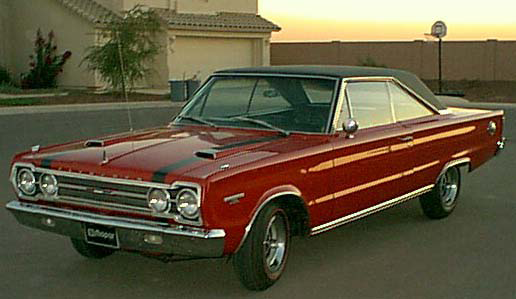 Like most muscle cars, the Plymouth GTX lasted a short time - from 1967 to 1971.Like most muscle cars, the Plymouth GTX lasted a short time - from 1967 to 1971. In 1967, and all subsequent years, the Plymouth GTX was based on the mid-sized Belvedere platform. The Belvedere was a no-nonsense family car for budget-minded folks. Starting from this base model, Plymouth engineers developed the GTX. They added a blacked-out grill and a chrome facia for the back tail lights that continued over onto the the trunk lid. It came with a set of fiberglass non-functioning hood scoops and a tach mounted on the center console. And for fun dual white racing stripes could be added on the lower body sides ending at a chrome mounted GTX badge.
Like most muscle cars, the Plymouth GTX lasted a short time - from 1967 to 1971.Like most muscle cars, the Plymouth GTX lasted a short time - from 1967 to 1971. In 1967, and all subsequent years, the Plymouth GTX was based on the mid-sized Belvedere platform. The Belvedere was a no-nonsense family car for budget-minded folks. Starting from this base model, Plymouth engineers developed the GTX. They added a blacked-out grill and a chrome facia for the back tail lights that continued over onto the the trunk lid. It came with a set of fiberglass non-functioning hood scoops and a tach mounted on the center console. And for fun dual white racing stripes could be added on the lower body sides ending at a chrome mounted GTX badge.
Two engines were available: 440 cubic inch 4 barrel V8 or 426 cubic inch “Hemi” as option. It came with the TorqueFlite automatic transmission as standard with a four speed manual transmission as a no cost option. Suspension upgrades provided a stiffer ride and better handling, especially during cornering. It included wide-oval tires and wheel changes. A buyer could upgrade with front disc brakes and a limited slip differential.
1968 Plymouth GTX - 2nd generation
In 1968, the Belvedere platform underwent significant styling changes. The car was larger and had an enhanced with new front grillwork and light placement and back taillight changes. The body was more curvy and rounded, a “Coke Bottle Design”. It looked less boxy. The hood design changed with different non-functional hood vents and matt black striping. Like the 1967 version, a buyer could choose either a two door hardtop or convertible as well as select from the two engines (440 or 426 Hemi).
In 1968, the GTX moved upscale with the addition of the Plymouth Road Runner for budget-minded buyers. Both were based on the Belvedere platform but the Road Runner was as basic as it comes. It was basically a Belvedere with a powerful 383 Magnum V8 punching 335 hp. It had cute Road Runner badges, bucket seats and not much else. And it outsold the GTX in great numbers cannibalizing sales of the GTX. As much as I though the Road Runner was a fun looking car, I also liked a good driving experience and the GTX offered that with its “luxury” details such as a radio, center console and comfortable front and rear seating. The 1968 GTX came with the well-appointed Sport Satellite cabin that included that great feature of the 1960s - fake woodgrain and chrome elements.
The GTX looked upscale with standard chrome wheel-lip moldings (which were just great places to generate rust). It continued with the previous year’s bright chrome tail panel with tail lights incorporated into the chrome. And for good measure it included side stripes in either black or white depending on the colour of the car.
My cars
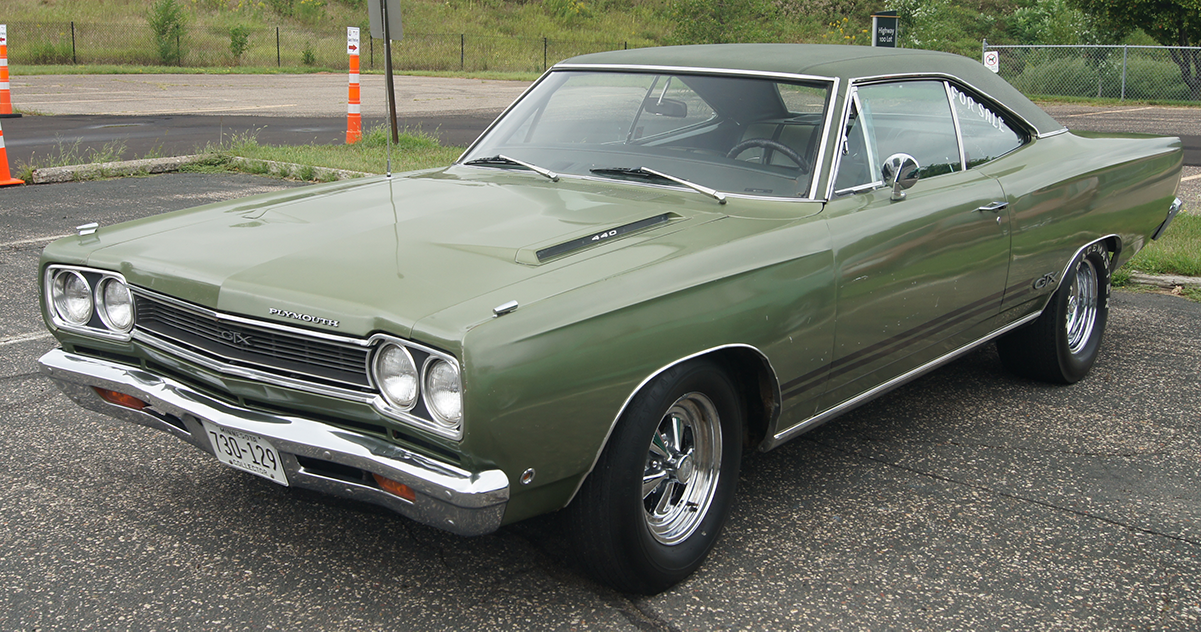 I owned two of them - a Canadian version and an American version (for parts). From the outside it was impossible to tell the difference but the tell-tale sign was the speedometer. The American version stopped at 120 MPH while the Canadian version topped up at 160 MPH. And I was the only kid in the neighborhood who had one, so when my friends saw the car they knew it was me. Other people only knew me by the car. When I moved west to Calgary, the first winter there killed the car. Freezing temperatures cracked the block. I was too young and too short of cash to save it. But it was a fun car and lots of great memories. My dad was left with the job of disposing of my other model back home in Ontario.
I owned two of them - a Canadian version and an American version (for parts). From the outside it was impossible to tell the difference but the tell-tale sign was the speedometer. The American version stopped at 120 MPH while the Canadian version topped up at 160 MPH. And I was the only kid in the neighborhood who had one, so when my friends saw the car they knew it was me. Other people only knew me by the car. When I moved west to Calgary, the first winter there killed the car. Freezing temperatures cracked the block. I was too young and too short of cash to save it. But it was a fun car and lots of great memories. My dad was left with the job of disposing of my other model back home in Ontario.
The mighty powerplants - 440 and 426 Hemi
Like all muscle cars, the GTX lived up to its name by offering only two engine options: the 440 cubic inch engine capable of doing 0 to 60 mph in 6.5 seconds or the optional the 426 cubic inch Hemi engine that smashed its way to 60 mph at 4.8 seconds. It was called the Hemi because the combustion chambers were shaped in a hemispherical upper end which meant more fuel could be injected and compressed thus packing quite a punch to drive the piston downward. It was the dream engine of my peers and of most other motor enthusiasts, but that is for another story.
This car was not for budget buyers. You could drive home from the Plymouth dealership with $3,355 for the GTX hardtop with the 440 or pay an additional $564 for the optional Hemi. Only 450 GTXs (414 hardtops and 36 convertibles) were ordered with the 426 Hemi, and probably for good reason. The 426 was difficult to keep in tune. The 440 was easier to maintain. It was also better for driving as it has lots of low-end torque. As for suspension, the ride was typical of muscle cars of the times - a stiff ride but with all that power handling in corners made most drivers anxious. The GTX offered power steering that was a bit too assisted and a bit crazy to handle on rough roads. But given all these problems, it was still a fun car to drive and the sound was ear-splitting on acceleration.
1969 Plymouth GTX - 3rd generation
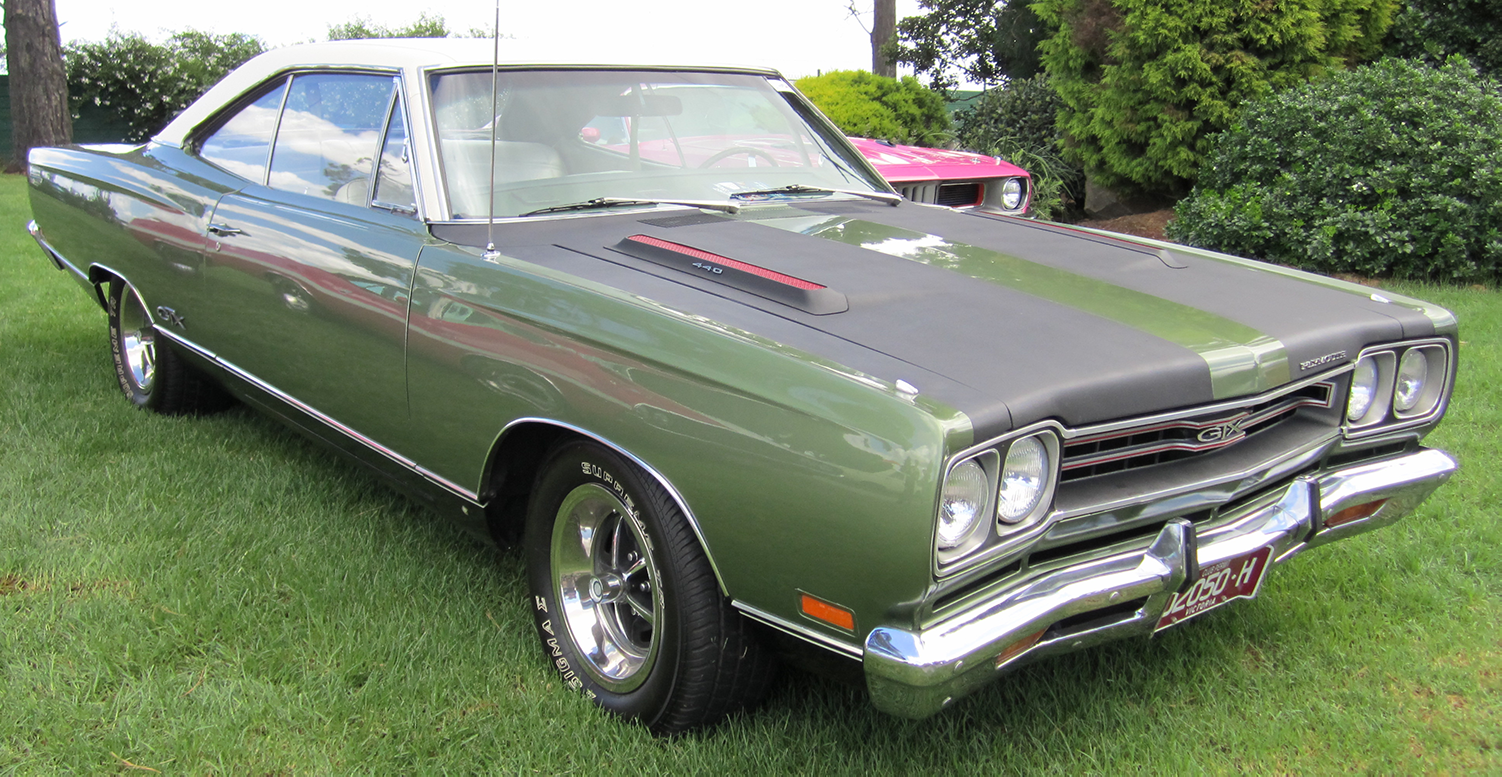 The 1969 model came with the changes made to all Belvedere-based models. These included new front end form, a more rounded side body, changed tail lamp and additional chrome around the wheels, as well as changes to the interior. For all intents and purposes it was identical with the 1968 version. The standard GTX package was applied to this new model with the same engine options as the 1968 models. But sales were cannibalized by the popular Road Runner, a potent - and cheap - muscle car.
The 1969 model came with the changes made to all Belvedere-based models. These included new front end form, a more rounded side body, changed tail lamp and additional chrome around the wheels, as well as changes to the interior. For all intents and purposes it was identical with the 1968 version. The standard GTX package was applied to this new model with the same engine options as the 1968 models. But sales were cannibalized by the popular Road Runner, a potent - and cheap - muscle car.
1970 Plymouth GTX - 4th generation
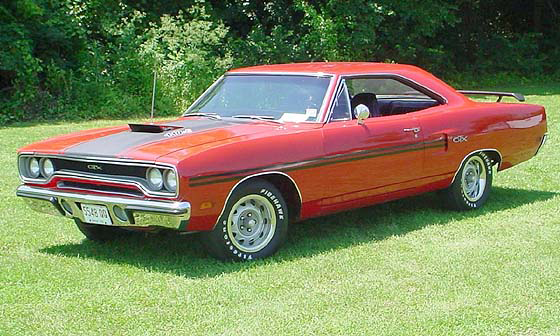 Following the design changes to the Satellite Super Sport, the 1970 Plymouth GTX was in my opinion the beauty of the GTX versions. It had this smooth body that began at its growly, fighter-pilot glasses front-end with the bold GTX highlighted on its matt-black grill. It completed the picture with its equally challenging double-striped lighting on its tail. My friend owned a Road Runner model and it looked sweet coming down the road. Don’t know why I didn’t sell my 1968s and pickup a 1970 model. Probably the cash, which as a teenager was hard to come by. It had the now familiar double-black (or white) stripes ending in a faux-air intact behind the door. The bold GTX emblem reminded challengers (including Dodge Challengers) that power resided under the hood. The body gained a soft, curvy round shape. Chrome wheel openings spoke of class and taste. And like the previous versions, the interior had luxurious touches, new high-back bucket seats and roominess that came with the Belvedere body form.
Following the design changes to the Satellite Super Sport, the 1970 Plymouth GTX was in my opinion the beauty of the GTX versions. It had this smooth body that began at its growly, fighter-pilot glasses front-end with the bold GTX highlighted on its matt-black grill. It completed the picture with its equally challenging double-striped lighting on its tail. My friend owned a Road Runner model and it looked sweet coming down the road. Don’t know why I didn’t sell my 1968s and pickup a 1970 model. Probably the cash, which as a teenager was hard to come by. It had the now familiar double-black (or white) stripes ending in a faux-air intact behind the door. The bold GTX emblem reminded challengers (including Dodge Challengers) that power resided under the hood. The body gained a soft, curvy round shape. Chrome wheel openings spoke of class and taste. And like the previous versions, the interior had luxurious touches, new high-back bucket seats and roominess that came with the Belvedere body form.
But sales were declining. Plymouth managed to only sell eleven models with the 426 hemi power packs. What’s more, buyers knew the US and Canadian governments were planning on introducing stricter emissions standards to all vehicles. And of course, the price of fuel was beginning to rise.
The denouement: 1971 Plymouth GTX
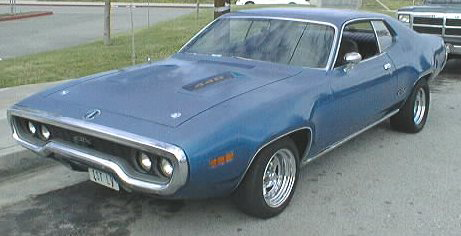 The end was nigh. 1971 was to be the last year for the GTX. Like the Road Runner, it was based on the Satellite but to me this model just looked weird. It had this really odd bumper masking the headlamps, probably an engineering solution to meet safety requirements. The engineers could have come up with a better idea, but this is what happens when a new requirement is bandaged on top of an old solution. I suppose with the right paint job, the 1971 GTX might look menacing and powerful but I just could not get over that weird look. There isn’t much to say about this last model, except it was the end of the line for a once great car.
The end was nigh. 1971 was to be the last year for the GTX. Like the Road Runner, it was based on the Satellite but to me this model just looked weird. It had this really odd bumper masking the headlamps, probably an engineering solution to meet safety requirements. The engineers could have come up with a better idea, but this is what happens when a new requirement is bandaged on top of an old solution. I suppose with the right paint job, the 1971 GTX might look menacing and powerful but I just could not get over that weird look. There isn’t much to say about this last model, except it was the end of the line for a once great car.
So, that was it. Road Runners continued to be produced for a while and the GTX badge became an amendment to the Road Runner name. Somehow, Plymouth dropped the ball with the GTX. Plymouth should have made only one muscle car not two models. Both were great cars. The Road Runner had the charm and humour suitable for racing wannabes. The GTX had luxury for the family man wanting a bit of power on the way to the office. Either way, Plymouth needed one not two models. After all, they had the ‘Cuda which predated the GTX. Somehow, Chrysler was in a mad competition for dwindling buyers trying to segment the market like all the different flavoured toothpastes in a grocery store. Eventually, one of the flavours has to go.
Reviving the GTX?
 This was the fate of the Plymouth GTX. I recall writing Chrysler in the late 1970s asking if they had planned on renewing the GTX. They replied that it served Plymouth well but they had no plans to revive it. They did send me as a gift a GTX badge, which I though was a kind gesture on their part. So, here we are today and Chrysler is still producing the Dodge Challenger including the powerful Hellcat. and it is selling well. Maybe someday they will get inspired and produce an all-electric all-wheel drive GTX on a Dodge. Plymouth as a division of Chrysler is no more.
This was the fate of the Plymouth GTX. I recall writing Chrysler in the late 1970s asking if they had planned on renewing the GTX. They replied that it served Plymouth well but they had no plans to revive it. They did send me as a gift a GTX badge, which I though was a kind gesture on their part. So, here we are today and Chrysler is still producing the Dodge Challenger including the powerful Hellcat. and it is selling well. Maybe someday they will get inspired and produce an all-electric all-wheel drive GTX on a Dodge. Plymouth as a division of Chrysler is no more.
So, here is some inspiration to remind you that once upon a time, driving a very powerful and fast car down the back roads of Ontario was just the sort of fun me and my buddies used to do on Friday nights. Today, we could not outrun the police (I am glad to say I never tried anyway and my uncle who was a Toronto Police Captain would have disapproved) because they are driving cars much more powerful than any I have ever owned.
GTX Statistics
| Production | Details |
|---|---|
| 2 door coupe | 17,914 |
| 2 door convertible | 1,026 |
| Engine | Details |
| 426 Hemi V8 | V8 425bhp@5000rpm, 490lb-ft@4000rpm |
| 440 V8 | V8 375bhp@4600rpm, 480lb-ft@3200rpm |
| Performance | Details |
| 426/425bhp | 1/4 mile in low 13s |
| 440/375bhp | 0-60 in 6.6 sec, 1/4 mile in 15.2 sec @ 97mph |
Note: This article was first published on my tribe Family Man at DriveTribe.com.